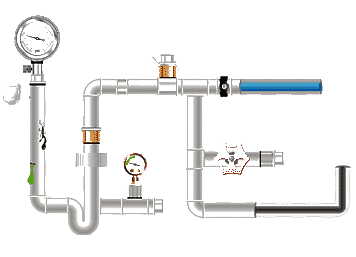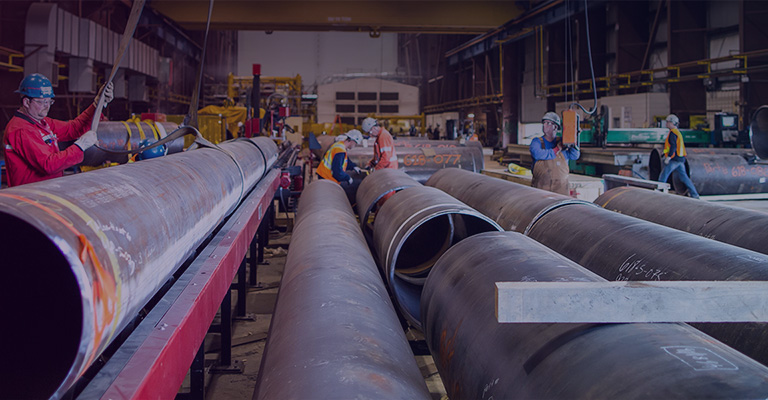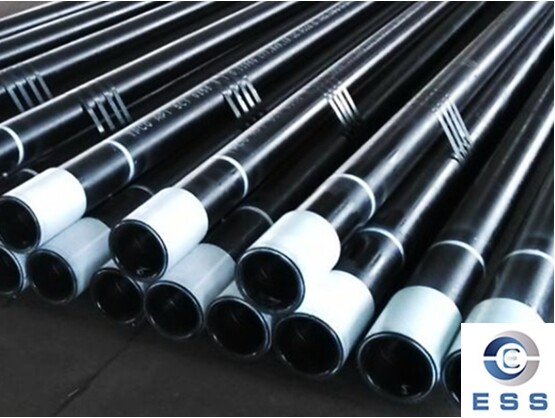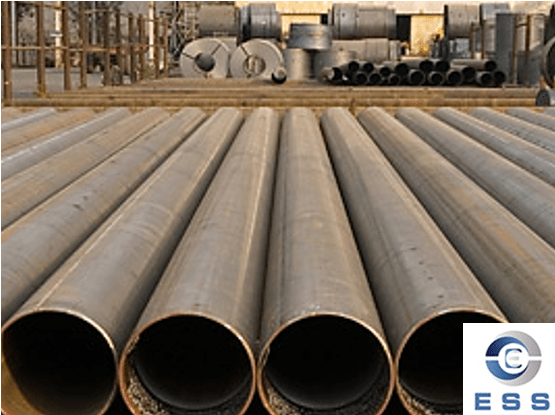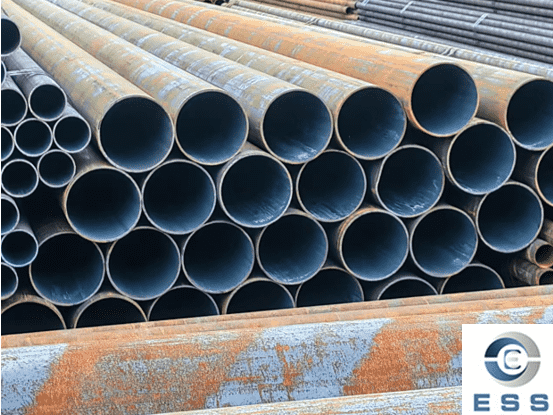In the complex world of drilling, every
component is critical to operational success. Of particular importance are API drill
pipe thread types, the unsung heroes that ensure seamless power transmission
and fluid circulation downhole.
API drill pipe threads are drill pipe connections manufactured according to American Petroleum Institute (API)
standards, guaranteeing interchangeability, load-bearing capacity, and sealing
performance. Common types include REG, IF, FH, NC, SRSC, and DS. Selection
should be based on well depth, circulation rate, formation abrasiveness,
drilling rig torque capacity, and compatibility with existing equipment.
What Are API Drill Pipe Threads?
Drill pipe threads are specialized
mechanical connections machined onto the ends of drill pipe segments, enabling
them to be joined together to form a continuous drill string. These threads are
carefully designed with specific profiles, tapers, and dimensions to ensure a
secure, high-strength connection capable of transmitting rotational torque,
downward force, and drilling fluid pressure.
The male end (called the "pin")
has external threads, and the female end (called the "box") has
corresponding internal threads. The design of these threads is critical to
maintaining drill string integrity under the extreme stresses encountered
during drilling operations, preventing costly failures, and ensuring efficient
well construction.
2. API Drill Pipe Threads
API drill pipe threads refer to
standardized threaded connections on drill pipe that conform to American
Petroleum Institute (API) specifications, specifically API
Spec 5DP.
These API threads ensure compatibility,
strength, and reliable sealing for drill pipe used in demanding oil and gas
drilling operations.

API Drill Pipe Thread Dimensions
API drill pipe thread dimensions are highly
standardized and strictly defined by the American Petroleum Institute (API),
primarily based on API Spec 5DP and API Spec 7-2. These precise dimensions
ensure interchangeability and consistent performance across manufacturers and
drilling operations worldwide.
Precise specifications encompass multiple
parameters for each thread type, ensuring the robust and reliable connections
necessary for the demanding conditions of oil and gas drilling.
Key API-defined drill pipe thread
dimensions include:
1. Outside Diameter (OD) and Inside
Diameter (ID)
Nominal drill
pipe size, which determines the dimensions of tool joints and threads.
2. Threads per Inch (TPI) / Pitch
The number of threads in a given linear
inch, or the distance between corresponding points on adjacent threads.
3. Taper Per Foot (TPF)
The rate at which the thread diameter
changes along its length. API threads typically have a taper of 1 1/4 inches, 1
1/2 inches, 2 inches, or 3 inches per foot.
4. Thread Form
The specific shape of the thread, including
the flank angle (e.g., 60°), root radius, crest cutoff,
and thread height.
5. Pitch Diameter
The diameter of an imaginary cylinder
passing through the threads at the point where the thread width and pitch width
are equal.
6. Pin Length and Box Length
The axial dimensions of the threaded
portions of the male (pin) and female (box) ends of a tool joint.
7. Assembly Depth
The distance the pin enters the closure
when the connection is fully torqued.
8. Upset Size
The specific size of internal, external, or
internal/external upsets on the pipe body near the tool joint, used to
reinforce the pipe to compensate for material removed during threading.
API Drill Pipe Thread Types
The American Petroleum Institute (API) has
developed a series of standardized drill pipe thread types, which are critical
to ensuring compatibility, strength, and reliable connections within the drill
string. These thread types are carefully designed to withstand the intense
stresses and operational demands encountered during oil and gas drilling.
Understanding each thread type is key to
optimizing drilling performance and avoiding costly failures. The following are
the main API drill pipe thread types:
1. Regular (REG) Thread
API Regular (REG) Thread is a classic and
robust connection designed for general drilling applications, providing a
strong mechanical interlock between the male and female ends of the drill pipe.
-Features: Deep thread profile, tapered
threads, and shoulder contact load bearing.
-Advantages: Simple construction, high
durability, proven processing, and wide versatility.
-Disadvantages: Relatively small inner
diameter, resulting in increased fluid resistance. - Applications: Conventional
drilling, standard drill string connections, connecting drill bits and bottom
hole components, and applications requiring high mechanical strength.
2. Internal Flush (IF) Thread
The design of the API internal flush (IF)
thread focuses primarily on optimizing hydraulic efficiency. It is designed to
create a smooth, continuous internal bore throughout the entire connector,
minimizing turbulence and pressure drop as drilling fluid flows through the
drill string.
- Features: Streamlined shape, large
internal diameter; externally thickened design, smooth internal bore.
- Advantages: Excellent hydraulic
efficiency; minimized turbulence and pressure drop; enhanced cuttings removal.
- Disadvantages: Potentially increased
connector outer diameter, cost, and wear.
- Applications: High-circulation drilling,
efficient wellbore cleaning, and suitable for a variety of drilling operations.
3. Full Hole (FH) Thread
The API full-hole (FH) thread is another
connection type designed to maximize internal fluid flow. Similar to the IF
thread, it typically has a larger internal diameter. They are typically used
for larger diameter drill pipe and are often chosen when achieving the highest
flow efficiency through the drill string is a priority.
-Features: Largest inner diameter; external
upset design for maximum fluid flow.
-Advantages: Excellent hydraulic
performance; minimized pressure loss; maximized fluid flow.
-Disadvantages: Joint strength may need to
be compensated by material and upset design.
-Applications: Large-diameter drilling,
high-pump-rate operations, maximizing flow efficiency.
4. Numbered Connection (NC)
The API Numbered Connection (NC) series was
introduced to standardize and replace many older API thread designs, including
some IF and FH connections.
The "NC" designation is followed
by a number representing the approximate pitch diameter of the thread (in
inches and tenths of an inch), providing a clear and consistent naming
convention.
-Features: Standardized series (e.g., NC26,
NC31, NC38, NC46, NC50); replaces older API designations.
-Advantages: High
interchangeability; stable performance; standardized dimensions; high torsional
and tensile strength.
-Applications: Applicable across a wide
range of drilling depths and formations, in compliance with industry standards.
5. Standard Rotary Shoulder Connection
(SRSC)
Standard Rotary Shoulder Connections (SRSC)
are a broad category encompassing various tapered rotary shoulder connections
used in the drilling industry, including API threads such as REG, IF, FH, and
NC. These connections rely on the "engagement" (close contact) of
precision-machined shoulders to provide primary sealing and transfer
compressive loads.
-Features: Wide variety, including REG, IF,
FH, and NC; rely on shoulder make-up for primary sealing and load transfer.
-Advantages: Quick make-up/break-out;
reliable under high torque/tension conditions; critical to drillstring
integrity.
-Applications: Widely used throughout the
drillstring in conventional drilling.
6. Double Shoulder (DS) Connection
Double Shoulder (DS) threaded connections
are advanced proprietary or specialized thread designs that offer improved
performance compared to standard API threaded connections by adding an
auxiliary shoulder.
-Features: Features an auxiliary drill
shoulder attached after the main drill bit is engaged.
-Benefits: Enhanced torsional strength;
enhanced bounce resistance; excellent fatigue resistance.
-Applications: Suitable for extended reach
drilling, horizontal wells, hard rock drilling, and harsh environments.
API Drill Pipe Thread Comparison
|
Thread Type
|
Inner Diameter Advantage
|
Torque/Tension
|
Hydraulic Efficiency
|
|
REG
|
Medium
|
High
|
Medium
|
|
IF
|
Large
|
Medium
|
High
|
|
FH
|
Maximum
|
Design-Dependent
|
Highest
|
|
NC
|
Medium-Variable
|
High
|
Medium
|
|
SRSC
|
Shoulder-Dependent
|
High
|
Medium
|
|
DS
|
Medium
|
Very High
|
Medium
|
How to Choose the Right API Drill Pipe
Thread Type?
Choosing the right API drill pipe thread
type is crucial, directly impacting drilling efficiency, safety, and total
project cost. The selection process requires a careful evaluation of various
factors related to the specific drilling environment and operational
requirements. Thread mismatches can lead to premature wear, connection
failures, and costly downtime.
The following are key factors to consider
when selecting the appropriate API drill pipe thread type:
1. Well Depth and Design
Deeper wells and more complex well designs
(e.g., horizontal wells, extended reach wells) place higher tensile and
torsional stresses on the drill string, necessitating stronger connections,
such as API NC or double-shouldered threads.
2. Drilling Fluid Properties and
Circulation Rates
Operations requiring high flow rates for
efficient cuttings removal or specific fluid characteristics (e.g., heavy mud)
benefit from connections with larger internal bores, such as API internal flush
(IF) or full-bore (FH) threads, to minimize pressure loss.
3. Formation Type and Abrasiveness
Drilling through hard, abrasive formations
accelerates thread wear. In these situations, robust joints with excellent wear
resistance or joints designed for superior fatigue life (e.g., certain
specialty joints or hardbanded drill pipe joints) are preferred.
4. Rig Capacity and Torque Requirements
The maximum torque capacity of the rig and
the expected torque required to penetrate the formation will influence the
required thread strength. Connections such as CNC and double-shouldered are
designed for higher torque transmission.
5. Compatibility with Existing Equipment
Ensuring that the selected thread type is
compatible with existing drill collars, bits, and other bottomhole components
is crucial to avoid costly modifications or inventory issues.
6. Cost and Performance
While premium or double-shouldered
connections offer superior performance under harsh conditions, they come at a
higher cost. A cost-benefit analysis tailored to project requirements is
crucial.
FAQ
1. What Is The Difference Between API And
Non-API Threads?
API threads are manufactured to API
standards and have interchangeability and inspection requirements.
Non-API threads may be proprietary or
customized for specific applications, with varying interchangeability and
inspection standards.
2. Which Is Better, IF Or FH Threads?
There's no "best," only
"better fit."
IF offers a larger inside diameter and a
balanced design, while FH offers the largest inside diameter.
Design your trade-off based on hydraulic
requirements and strength.
Read more: Drill Pipe Thread Standard









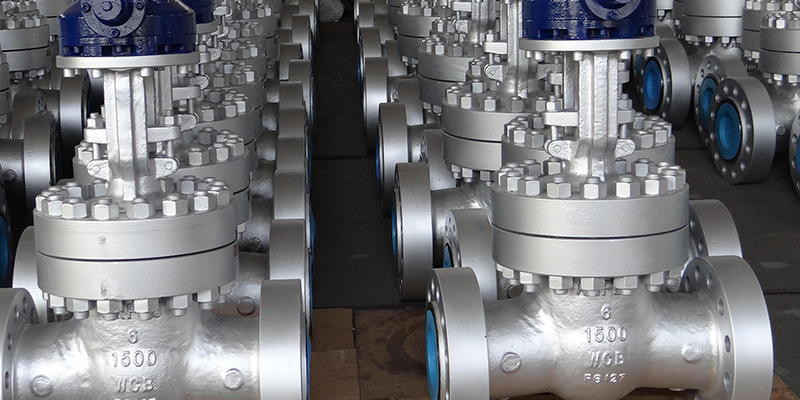
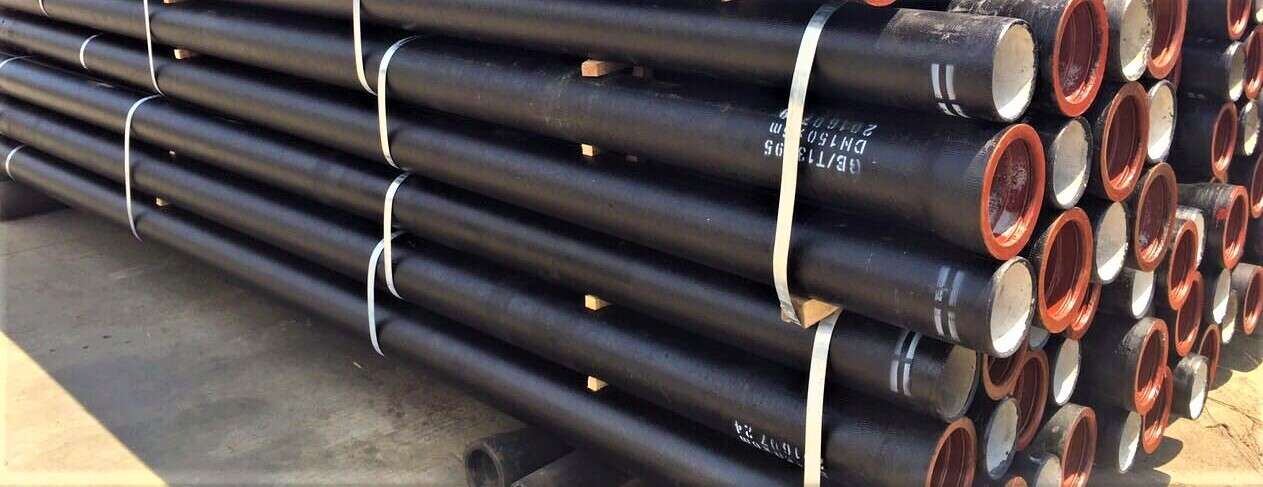


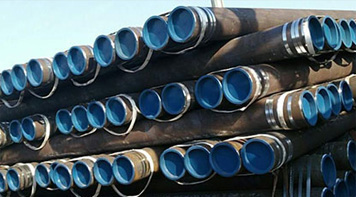 Eastern Steel Manufacturing Co.,Ltd not only improve product production and sales services, but also provide additional value-added services. As long as you need, we can complete your specific needs together.
Eastern Steel Manufacturing Co.,Ltd not only improve product production and sales services, but also provide additional value-added services. As long as you need, we can complete your specific needs together.
